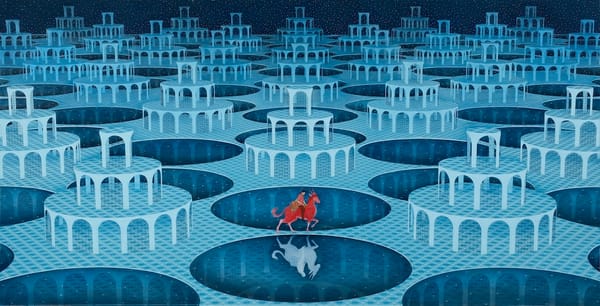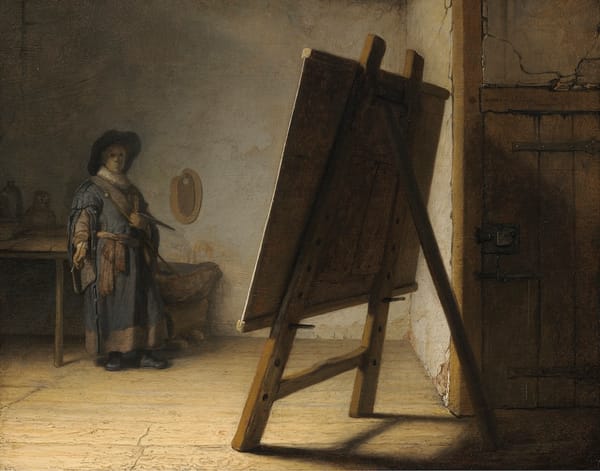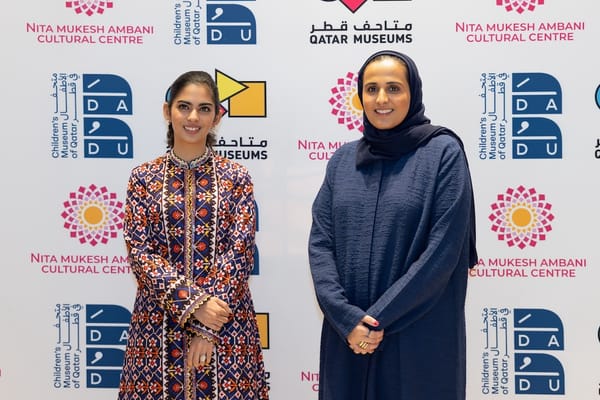Reflections and Doubles: Permindar Kaur and Prem Sahib at Pitzhanger Manor & Gallery
Prem Sahib and Permindar Kaur present two compelling solo exhibitions at Pitzhanger Manor & Gallery, exploring themes of identity, visibility, vulnerability, and power through sculptural and spatial interventions that respond to the site’s layered histories.
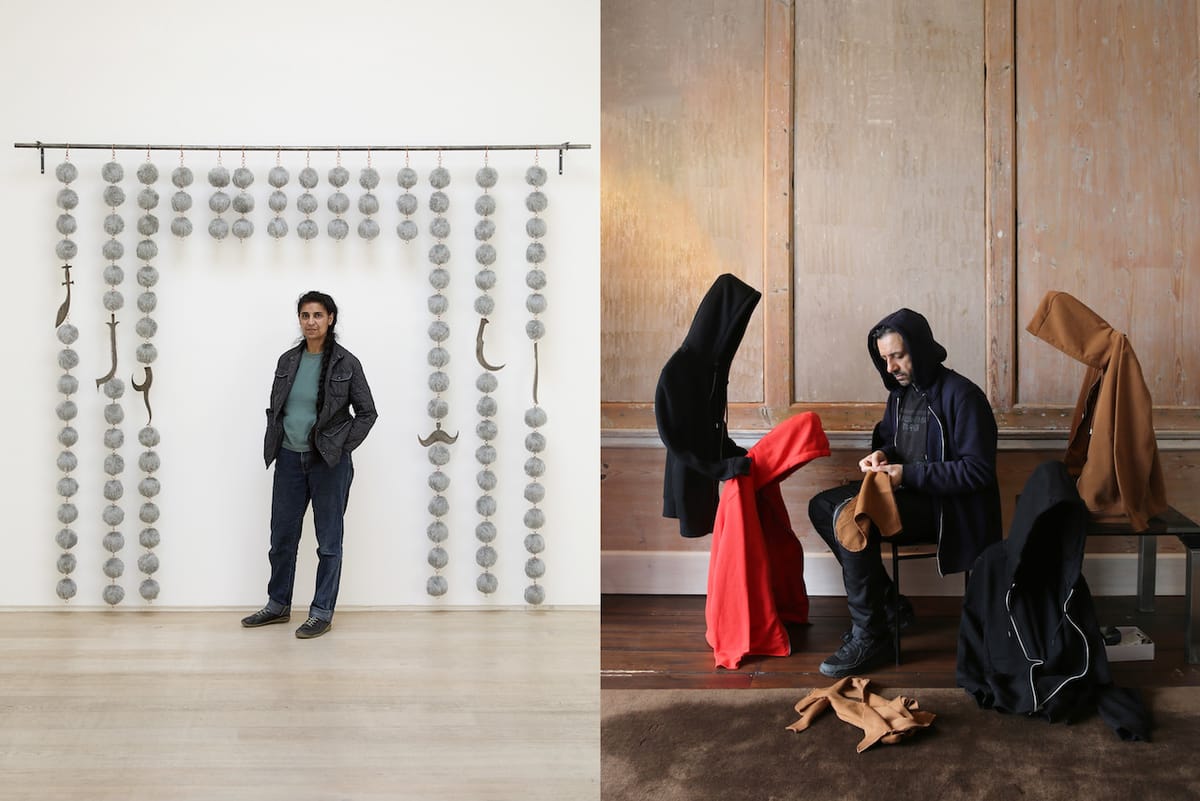
Pitzhanger Manor & Gallery in Ealing, London, presents a dynamic double exhibition that transforms the historic home of architect Sir John Soane into a layered site of memory, subversion, and sculptural intervention. Permindar Kaur: Mirror, Mirror and Prem Sahib: Doubles foreground the complex dialogues between personal history, public space, and the architecture of identity, and are on view until 21 September 2025.
Marking the first time either artist has worked within a heritage setting, the exhibitions respond to Soane’s legacy of illusion, doubling, and narrative-rich architecture. Both artists engage the space not simply as a backdrop, but as a charged terrain to explore questions of cultural inheritance, marginalisation, and domestic power.

Prem Sahib: Doubles
Prem Sahib’s exhibition begins in the gardens, where Bronze Apotropaic (2025)—a suspended bronze sculpture of two hooded sweatshirts—sets the tone for a show that probes visibility, mimicry, and marginality through sculptural poetics. Inside the manor, Apotropaic 1 (2023), a fabric version of the same form, continues the theme of doubling across materials and contexts.
Sahib notes:
“Heritage is an interesting lens to think through, as it implies a kind of inheritance that we actively choose to maintain or protect. Although I was aware of Pitzhanger Manor growing up—having lived locally—it wasn’t until art school that I encountered Soane properly. His architectural trickery—doubling, mirroring, and disorienting effects—reminded me of other constructed environments I was interested in, like cruising clubs and saunas.”
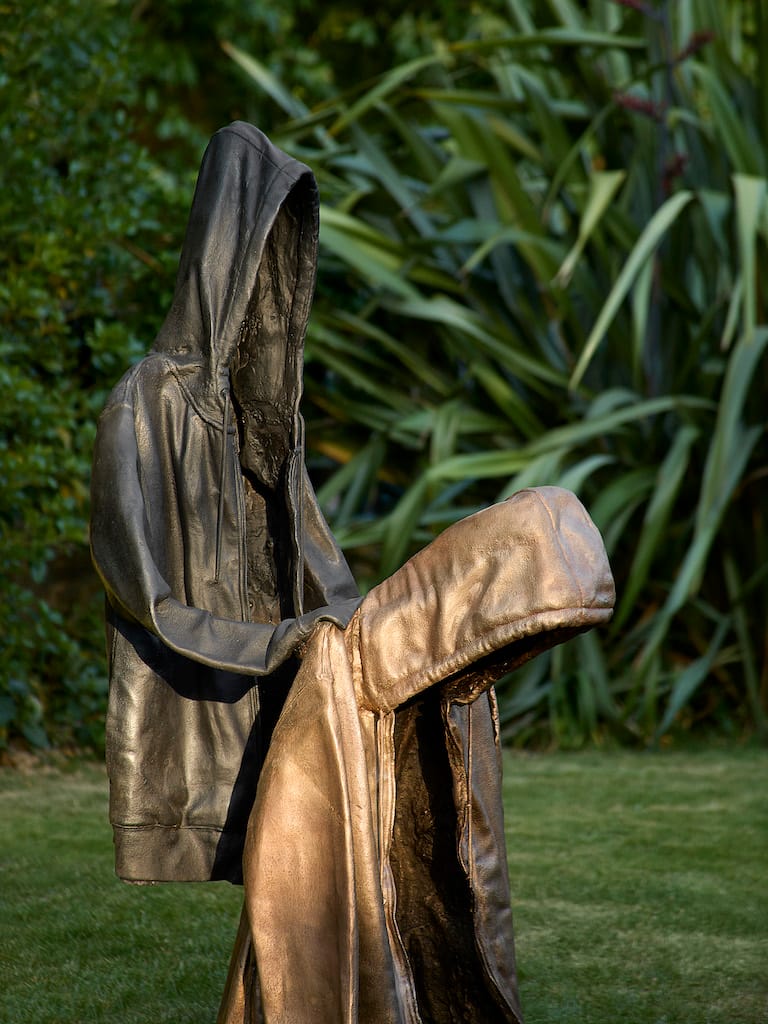
This interplay between structured space and subversive intimacy reverberates throughout Doubles. A key work, Front (2017), transposes a facsimile of a public toilet window—once located in nearby Walpole Park—into a gallery space beside the manor’s Georgian windows. For Sahib, this gesture acts as both ruin and relic:
“This artwork could be seen as a ruin, or an artefact like those Soane used to collect. But instead of heritage concerns, it speaks to local queer histories or forgotten pasts, such as the park being a cruising site before it was redeveloped.”
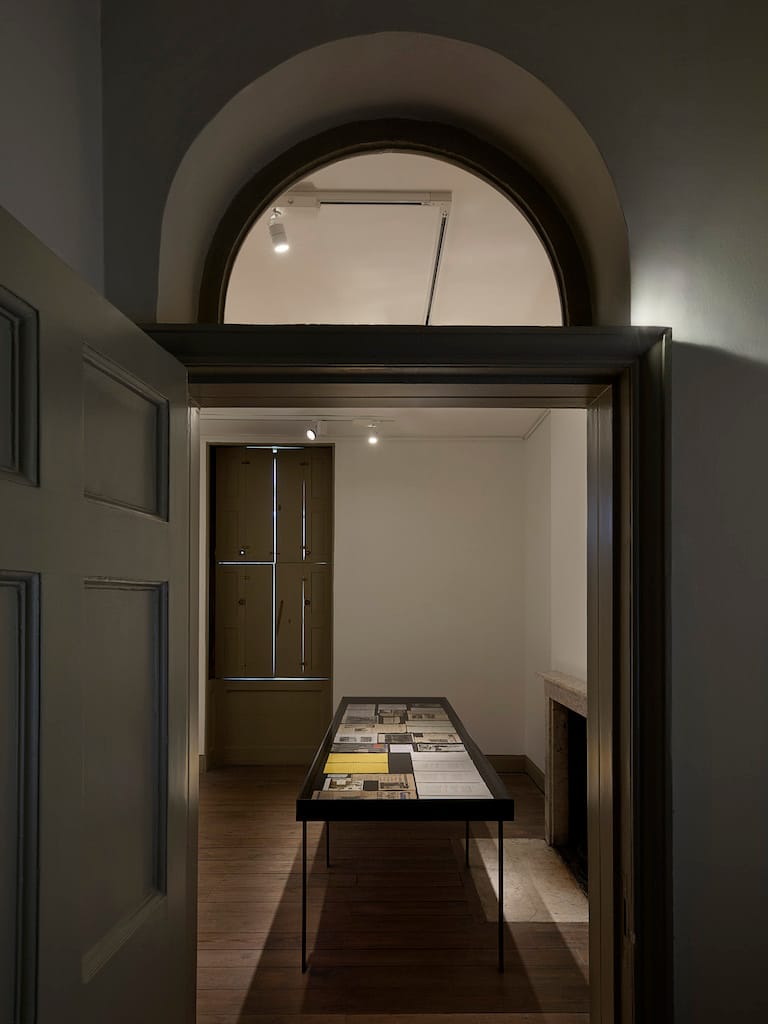
In Archive (2019), Sahib foregrounds personal memory, displaying documents belonging to his uncle, Kamaljit Sahib, a Southall-based activist. The installation inserts familial and political legacy into a space typically reserved for elite narratives:
“I wasn’t interested in taking on Soane or the house as a ‘subject’. I wanted to consider what the placement of certain works might do—how they could draw out narratives that the manor itself embodies. It’s about residues, echoes, and what feels ‘out-of-place’ in the imagination.”
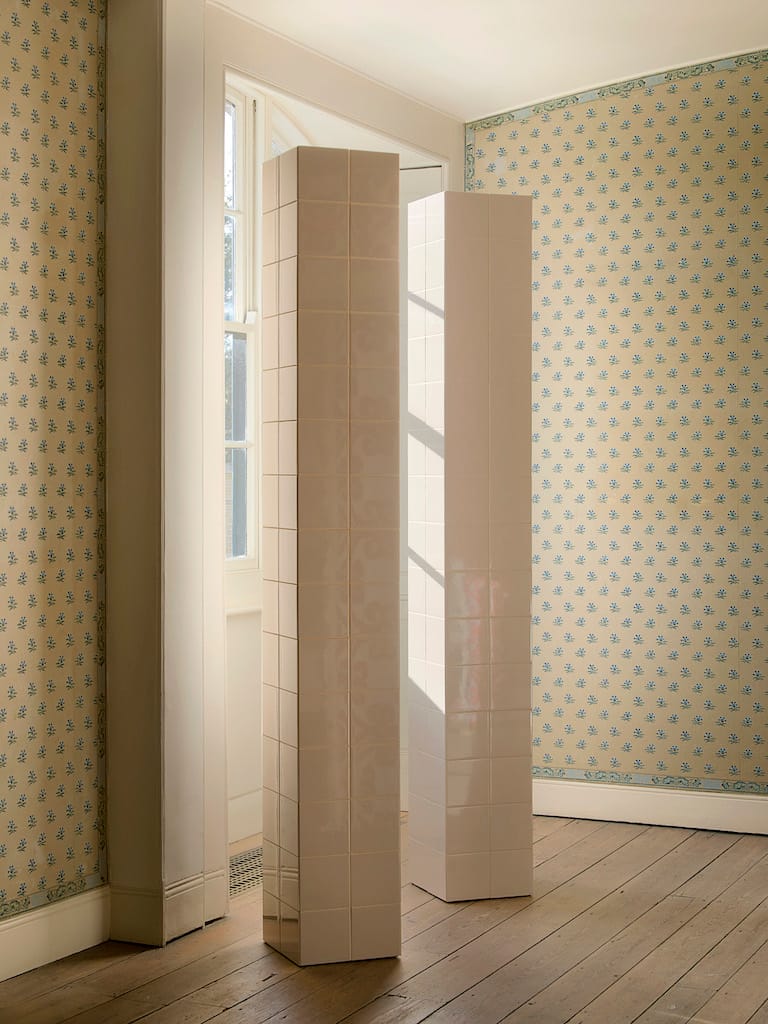
Other works—such as the mirrored aluminium panels Dissent (2023), or the sound installation Effigy (2025), hidden behind a closed door—evoke acts of subtle resistance, playfully mirroring Soane’s own architectural games while questioning institutional frameworks.
“Queering, for me, is about agitating norms—dismantling what we think we know about domesticity, about institutions, about objects. The idea of a copy or duplicate sends an object on a new trajectory, releasing it from a fixed identity.”
Permindar Kaur: Mirror, Mirror
In Mirror, Mirror, Permindar Kaur transforms Pitzhanger’s interiors into a site of dualities—childhood and control, camouflage and assertion, softness and strength. Kaur, known for her lifelong interest in power dynamics and domestic symbols, responds to the architectural specificity of the manor with striking new works as well as subtle reconfigurations of earlier pieces.
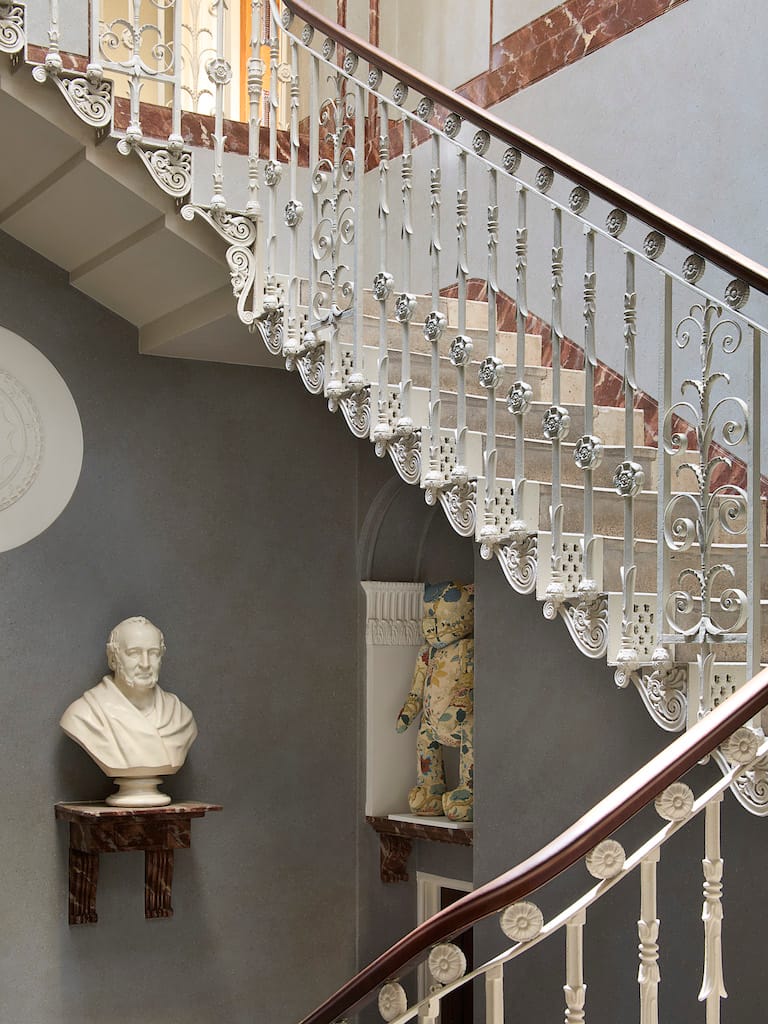
“I love working site-specific, looking at the building and its history,” Kaur explains. “I took inspiration from the curtains and the wallpaper, inspiring the artwork Baron (2025). In 2015, I made a series called Interlopers featuring black teddies taking over a gallery space. Here, I reworked it with floral print to fit the maximalist nature of the manor. It’s adapted to the space.”
Nestled in an alcove near the bust of Robert Walpole, Britain’s first Prime Minister, Baron offers a visual tension—between innocence and authority, play and politics.
In the dining room, A Life’s Journey (2025) spans six alcoves with miniature scenes inspired by the manor’s past and Kaur’s personal experiences. One contains a steel brick wall referencing Soane’s father, a bricklayer—a symbol of boundaries and silent labour:
“I have always liked the symbolism of a brick wall—an unmoving and unflinching barrier offering little in the way of rumination.”
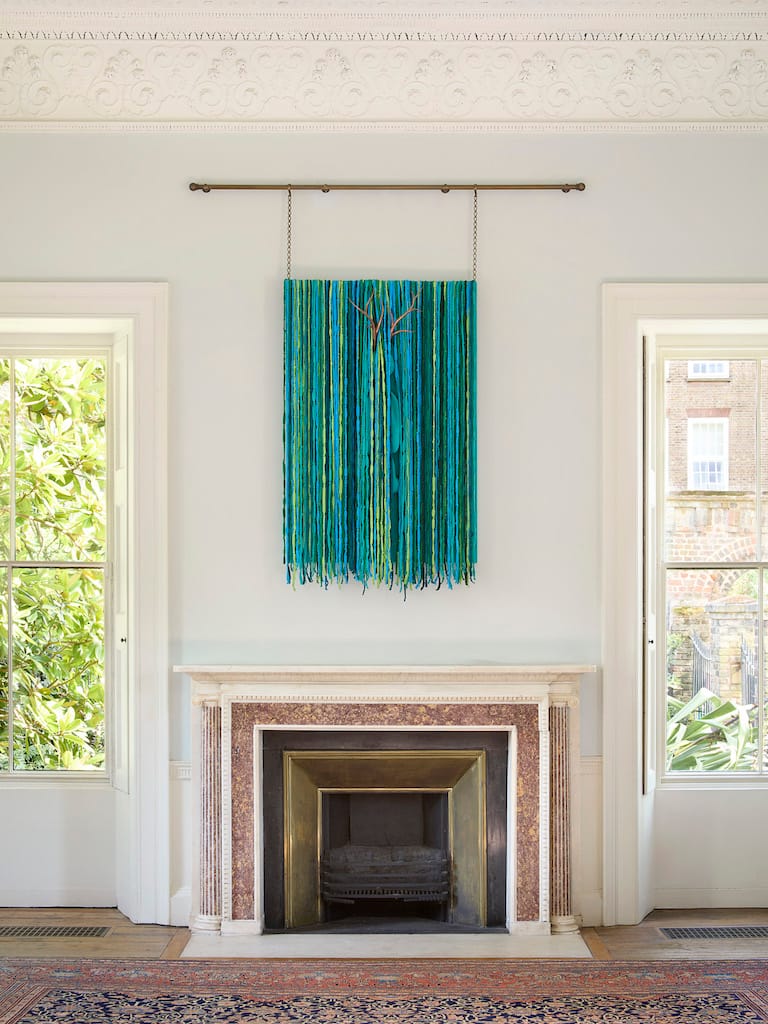
Elsewhere, Hidden (2013) and Indian Teddies (2021–23) nestle naturally within the manor’s rooms, blending with or gently disrupting its period décor. In Three Swedish Sloths (2018), bright floral fabric conceals claws and subtle outlines—beings that seek to vanish into their surroundings:
“My work is all about power relations, the hierarchy. The manor excites me as it represents this hierarchy. Soane came from a humble background—his dad a bricklayer—and rose to success. There is an eccentric nature to the manor which my artwork responds to well.”
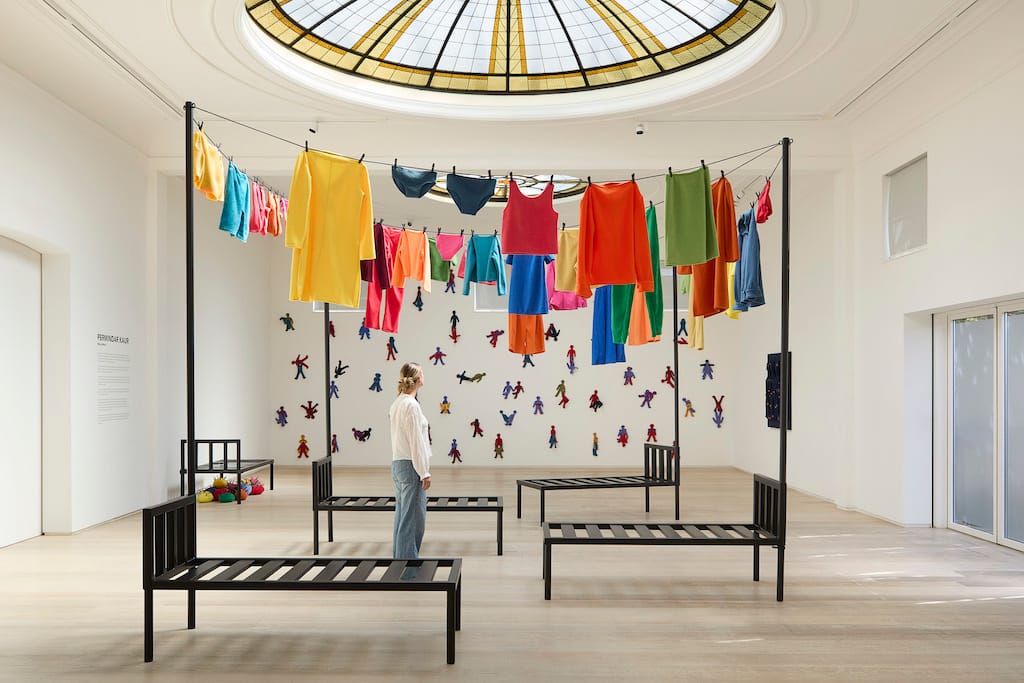
The exhibition continues in the gallery with Washing Line Bed (2024), where colourful fleece garments hang from steel bedframes beneath an ornate stained-glass window. A domestic gesture is rendered monumental and uncanny:
“There’s a uniformity to the clothes—shirts, knickers, socks—all made out of polar fleece. They are more a symbol of home than actual clothes. I use the harsh metal against soft fabric as a push and pull. The viewer is both invited in and made weary.”
Nearby, Threshold (2025) and Ten Teddies and Barrier (2017) deepen Kaur’s explorations of protection and marginalisation. Daggers soften into symbols, tucked into fluffy forms; teddy bears are tucked away in darkness, their presence unsettling.
“A lot of my work centres around hiding. Growing up, I had to learn how to hide who I am. It’s a hard process to learn, and an even harder one to unlearn. The camouflage is one form of exploring this… The figures want to remain hidden but can’t fully blend in. Hiding is the best form of protection.”
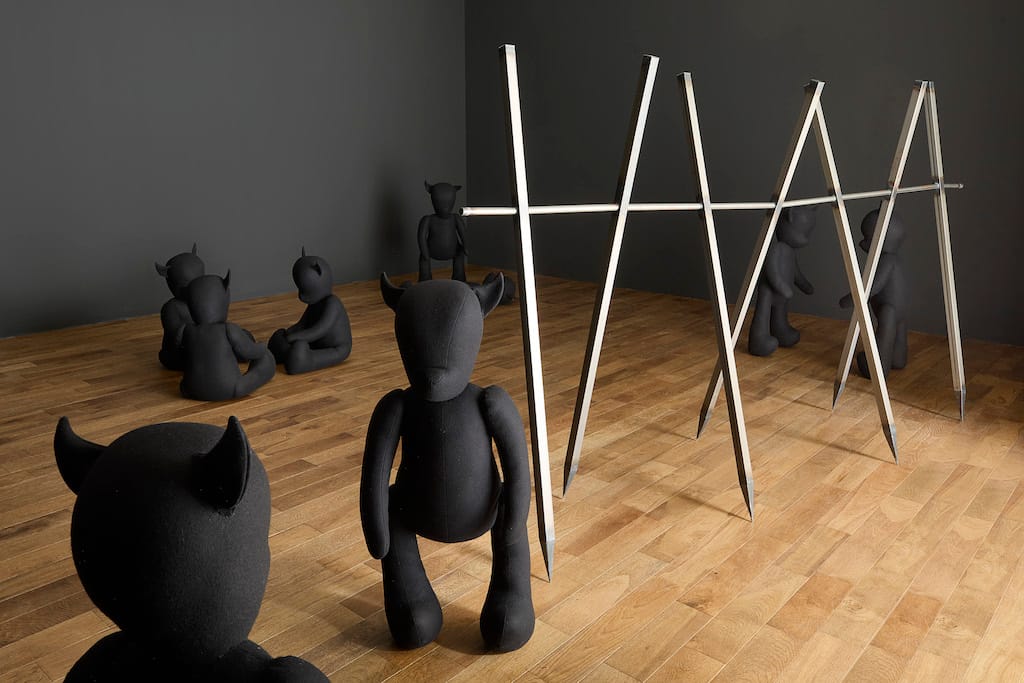
Kaur reflects on the evolution of her practice across decades, continents, and roles—as an artist, a mother, a diasporic thinker:
“When I first started out, my work focused on cultural identity—what it meant to be a British/Asian artist. Later, it became more internal, exploring psychological states and the domestic. Having children changed my perspective again. I returned to the art world after ten years, and now people are discovering my work as if for the first time. I’m really excited to still be showing at the level I am.”
Two Voices, One Dialogue
Although developed separately, Mirror, Mirror and Doubles resonate in their shared interest in what is obscured or overexposed, inherited or constructed. Kaur’s slyly camouflaged creatures and Sahib’s doubled forms both draw our attention to systems of power and exclusion, to what gets remembered—and what doesn’t. In inhabiting the grandeur of Pitzhanger Manor, both artists invite us to rethink the narratives embedded in its walls. In doing so, they offer alternate reflections—fractured, tender, defiant—on what it means to belong.


